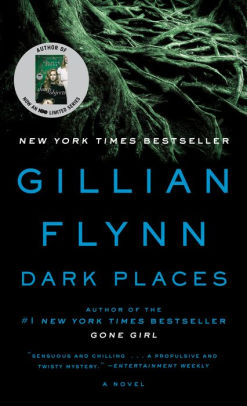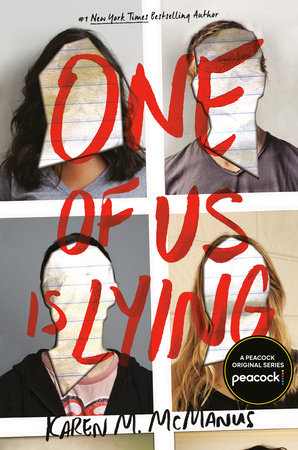
Source: Barnes & Noble
Dark Places is a 2009 thriller by Gillian Flynn,
whose other works are Sharp Objects and Gone Girl. It was
published by Shaye Areheart Books. It was listed on the New York Times Best
Seller List for fiction within a month of its publication date. The New
Yorker named it one of the best books of 2009. Roughly six years later, a
move adaptation starring Charlize Theron was released.
The summary of the book is as follows: Libby Day was seven
when her mother and two sisters were murdered in the “The Satan Sacrifice” of
Kinnnakee, Kansas. She survived, and later testified that her brother Ben was responsible.
Twenty-five years after the murders, a group of true-crime fans contacts Libby
and invites her to meet with them so they can question her for details. Many
don’t believe Ben was the murderer and are searching for evidence that will
clear his name. Libby, meanwhile, has fallen on hard times and hopes to make
some quick cash off of the family tragedy. She makes a deal with the club,
she’ll start looking for answers and report what she finds to them, for a fee.
As her search takes her around the Midwest, some painful truths resurface and
she finds herself once again on the run from a killer.
The narrative unfolds in two timelines. One timeline shows
Libby’s journey in the present, digging into the truth of what happened that
night and reconnecting with some of the others who may have hidden the truth
years earlier. The other timeline is the story of what happened in the past,
depicting the 24-hour period leading up to the murders. The perspective of the
“past” chapters shifts between Libby’s mother Patty and her brother Ben.
Patty’s chapters show the desperate situation the family was in financially
before the murders and her desire to simply help her family. Ben’s POV chapters
add dimension to his character and explain a few of the decisions he makes that
are pivotal to the mystery at the center of the story.
While having a story, more specifically a mystery, being
told in two timelines can be beneficial, I don’t think that style works as well
as it could have in Dark Places. Given that the reader already knows
what happens in January of 1985, there’s plenty of detail that could be omitted
without effecting the plot. We already know Patty and two of her children are
killed. We know Ben is arrested for the killing. Having two timelines is a
solid tactic for introducing red herrings or revealing previously unknown
facts, without having an exposition dump, but it isn’t used very effectively
here. There is an entire subplot that unfolded in 1985, which revolves around
15-year-old Ben being accused of a crime, that serves as a rather heavy-handed
red herring and I would say it has no real impact on the story as a whole if it
didn’t further Patty’s narrative about trying to keep the family farm together.
There was potential in Dark Places, but that potential wasn’t fully realized.
The novel is well-written, Flynn’s prose is fantastic as it is in all of her works. She does an excellent job of making the reader sympathize with, or in the very least like, characters that shouldn’t be likeable. Ben allegedly killed his family. Libby is using, and has used, the deaths of her mother and sisters to make money. There is a club called The Kill Club that’s fascinated by true crime to the point that not only do they decide to investigate murders for themselves, but they contact survivors and relatives of the victims, which is bound to reopen old, and painful, wounds. None of these characters should make you want this novel to have a fulfilling conclusion, an intriguing answer to the mystery, but thanks to Flynn’s writing chops, you do.
Let’s discuss the conclusion for a moment. As the novel’s
premise suggests, and some earlier parts of this review imply, Ben was not the
person who killed his mother and sisters. I know that is a spoiler, but it’s a
spoiler that shouldn’t come as a shock to anyone. Television, films and
literature have all taught us by now that if someone’s looking into a case
after its been solved, the police caught the wrong person. The reveal of
Patty’s real killer’s identity is underwhelming in my opinion. It isn’t an
out-of-nowhere reveal, but there also aren’t quite enough clues sprinkled through
out that tease or foreshadow the ending. In fact, the few clues that exist led
me to a much different, and darker conclusion. Something that really bothered
me about the truth of what happened didn’t relate to Patty’s death, but the
deaths of the two daughters. The motive behind Patty’s death is clear in
hindsight, and teased beforehand. The same isn’t true regarding the two
daughters, Michelle and Debby. They die for different, and much worse reasons.
My biggest criticism about the revelation, however, lies in how it happens as
an act of chance. A character says something, reveals information they
shouldn’t know, and that’s how the murder is solved. After reading 316 pages of
what happened right leading up to the murders, and Libby trying to solve the murders,
the whodunit is revealed when a character lets the wrong thing slip out. It’s
not a bad way to have the revelation happen, it just doesn’t fit with this
story.
Despite how critical I may seem, I enjoyed Dark Places. It
was a well-written, intriguing story. Not my favorite of Flynn’s but that’s in
no way a point against it. Dark Places, in my mind, is at a
disadvantage, because I will compare every novel of Flynn’s against Gone
Girl, and this novel, unfortunately, doesn’t stack up quite as well. It’s a
good book, but one I found to be a little boring. It’s a quick read, and
perfect for a day sitting on the beach or to enjoy on a plane or train. I would
definitely read it again.
Rating: 3.5 stars



